
Studies show the way – how does light pollution affect people and animals?
Measuring the impact light has on people and animals is complex. In order to choose the right lighting in the future, more knowledge is needed, along with standards for decision-makers to adhere to. The research institute RISE works to develop measurement methods to characterise the illuminated environment and thus provide a basis for future standards. This also includes evaluating acceptance of new lighting solutions that are developed with the aim of reducing ecological impact.
Light pollution affects people and animals, but it’s not easy to know what is the right light for each place – and what light people and animals thrive in best. To make well-founded decisions in the future, more knowledge is needed.
Maria Nilsson Tengelin is a physicist and researcher in photometry and radiometry at Research Institutes of Sweden (RISE). Her work involves light measurement as well as light-related research projects that form the basis for standards and guidelines concerning outdoor lighting.
“With more knowledge, more balanced decisions can be made. There are no solutions that suit all situations, but based on the applicable conditions, you can find a way forward,” says Maria.
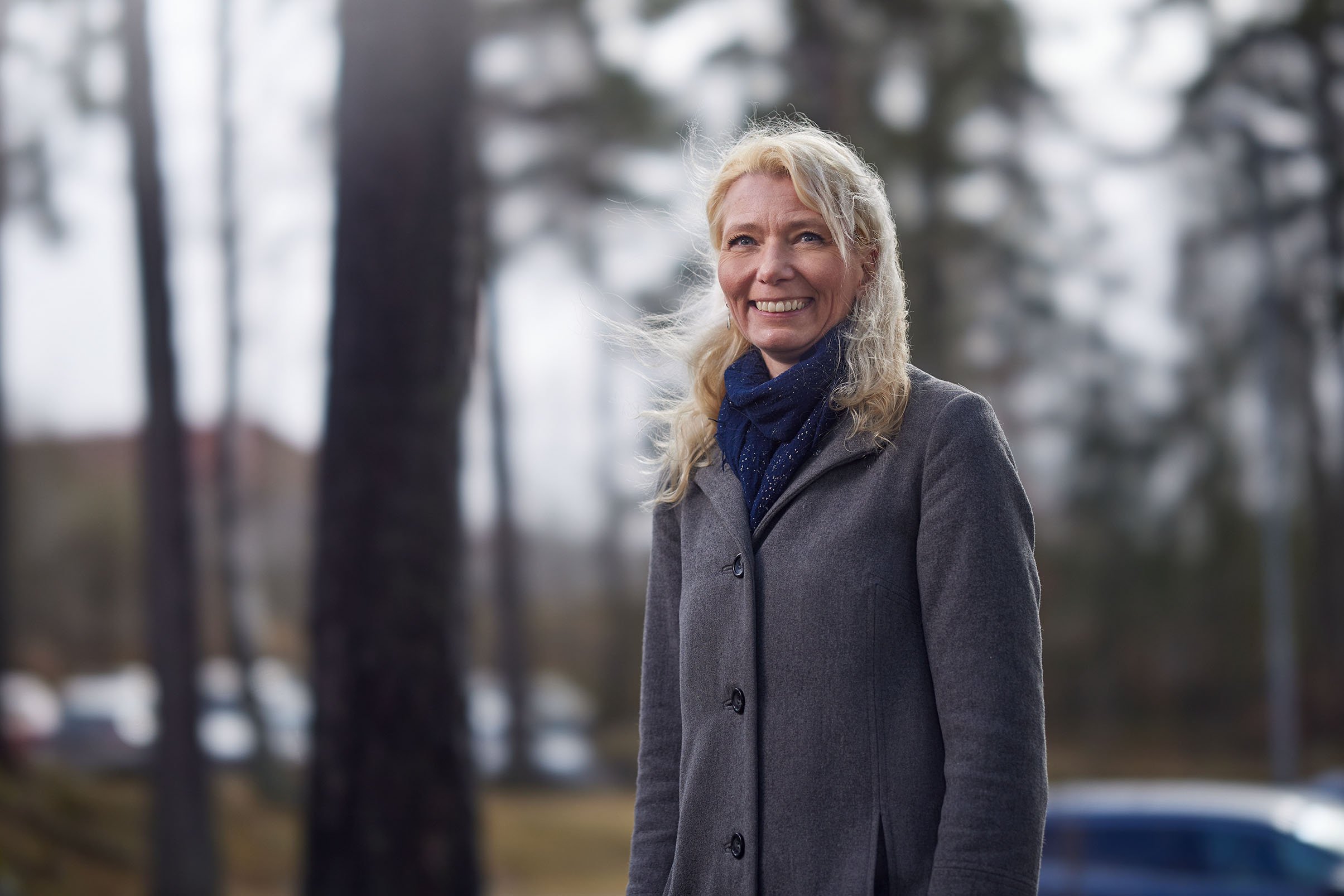
Maria Nilsson Tengelin, physicist and researcher at RISE.
Rigorous studies
Maria worked with Annika Jägerbrand from the University of Gävle and Alp Durmus from Penn State University, USA in the project ‘Energy-efficient Outdoor Lighting with Reduced Light Pollution’. A testbed was built on a pedestrian and bicycle path in a natural area on the outskirts of Borås in southern Sweden. For a week, the existing lights were switched off and temporary poles with luminaires from Fagerhult were set up. The luminaires had different correlated colour temperatures: neutral white (3000 K), warm white (2200 K) and orange (1800 K).
Each luminaire was equipped with two different types of optics: one with wide light distribution and one that was screened with more light on the path and almost nothing on the sides. This made it possible to examine different colour temperatures and narrow and wide light distributions in different combinations. The installation was evaluated using traditional ground-based light measurements and by means of a newly developed method in which a drone was used to measure how the light scattered up towards the sky and further out into the surroundings. During the experiment, 56 people walked along the path and completed a survey about their experience of the lighting environment as related to the different lighting settings.
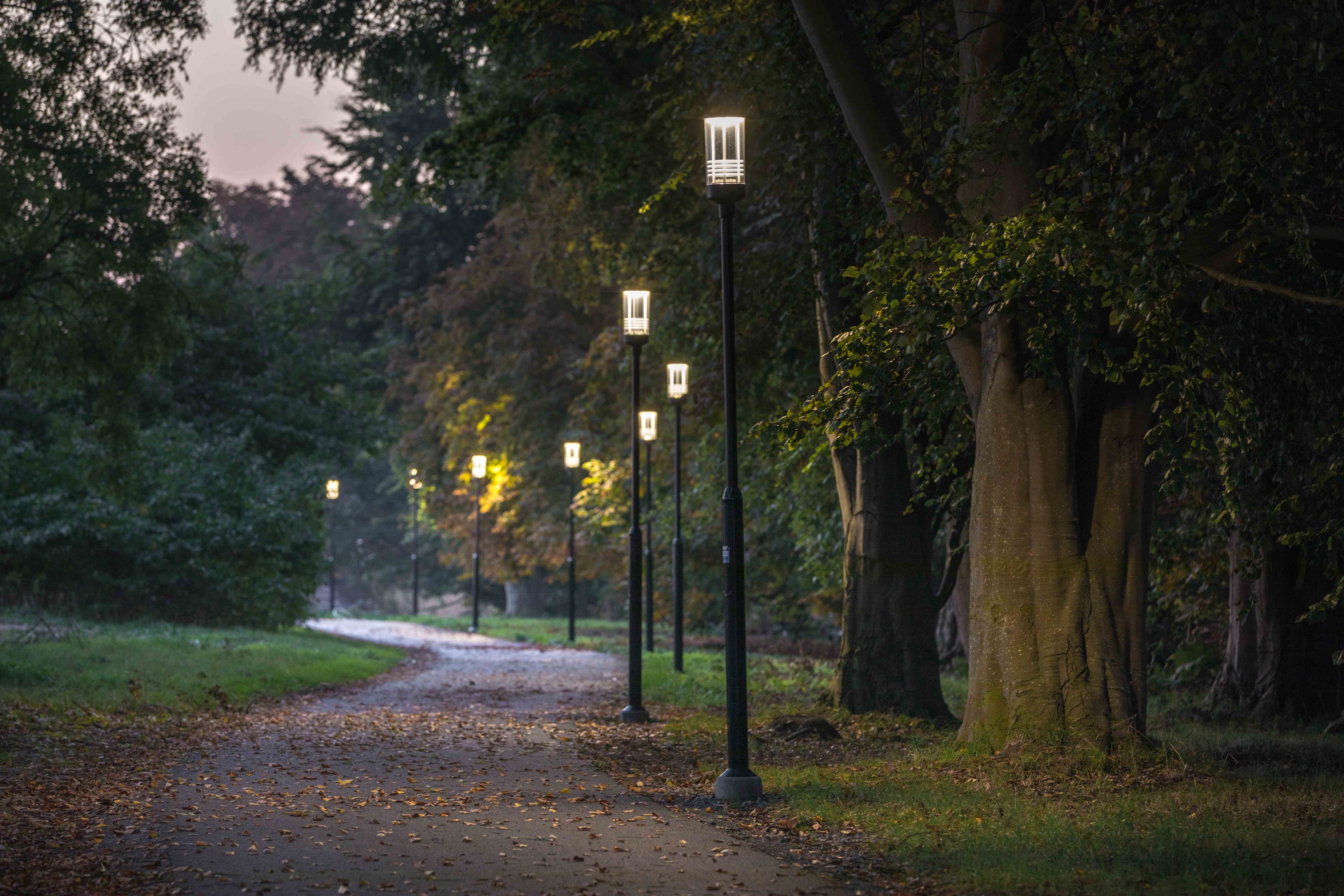
Pathway from Simrishamn, where Fagerhult's outdoor lighting illuminates the city.
“Among other things, the participants were asked to state which lighting they preferred, and whether they were prepared to make sacrifices if it benefits the environment, explains Maria. “The goal of the project was to find out how to reliably measure the amount of light pollution, and how we can reduce the adverse impact of outdoor lighting, while still ensuring that the lighting environment is good enough for people.”
The absolute majority of participants preferred the white light (2200 K and 3000 K) and only a very small proportion indicated that they preferred the orange light. When asked if other lighting could be accepted for environmental or energy reasons, the proportion of people who could accept orange lighting increased.
“The field experiment showed that 1800 K results in poorer visibility and a lower sense of safety and security, with women generally feeling the environment to be less safe. But the acceptance of orange light increases when the participants are made aware of the greater consideration for the ecological impact.”
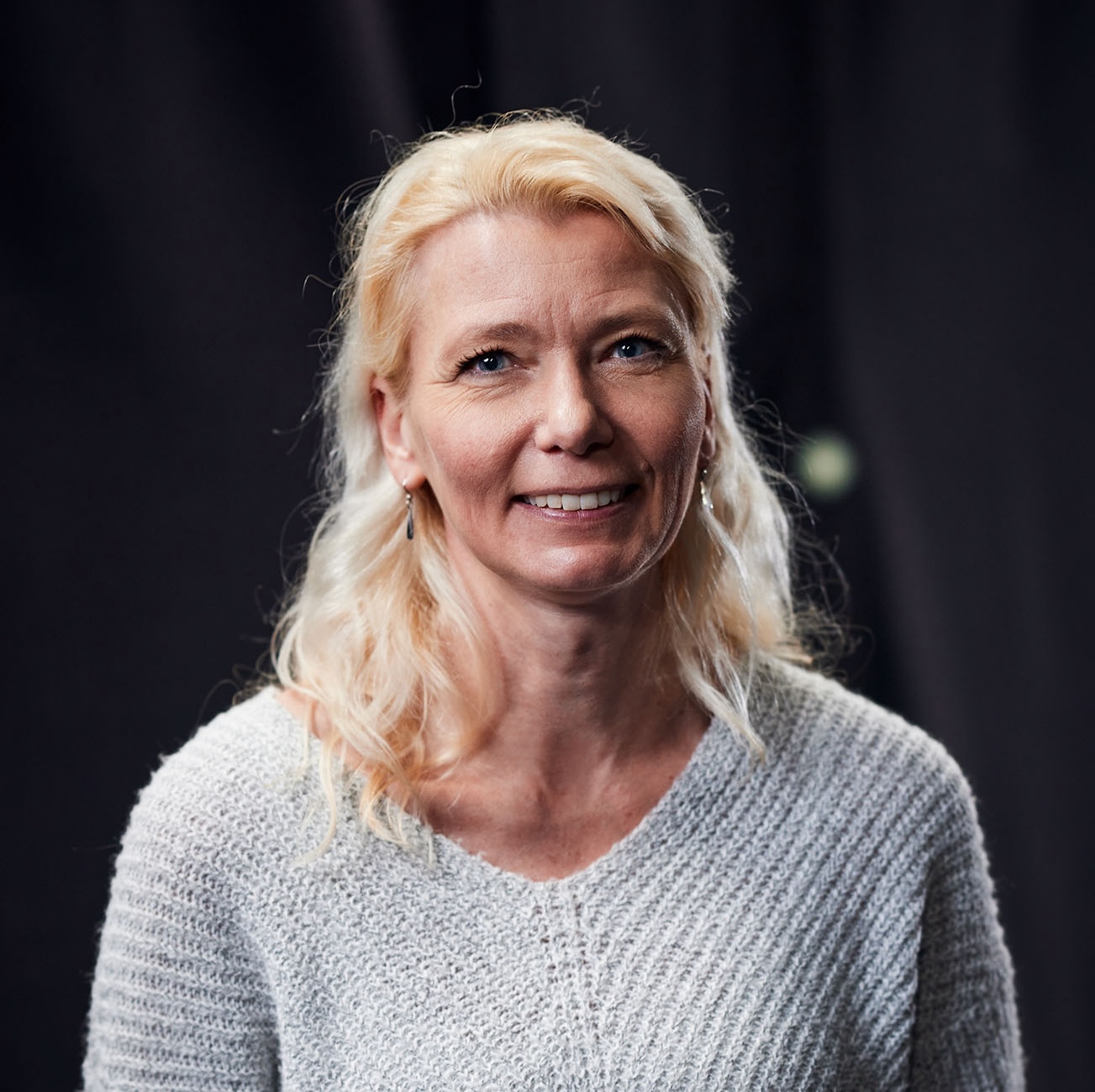 “The field experiment showed that 1800 K results in poorer visibility and a lower sense of safety and security, with women generally feeling the environment to be less safe. But the acceptance of orange light increases when the participants are made aware of the greater consideration for the ecological impact.” Maria Nilsson Tengelin, RISE
“The field experiment showed that 1800 K results in poorer visibility and a lower sense of safety and security, with women generally feeling the environment to be less safe. But the acceptance of orange light increases when the participants are made aware of the greater consideration for the ecological impact.” Maria Nilsson Tengelin, RISE
A new measurement methodology
The next collaboration project involves the further development of the methodology used for measurements. The goal is to develop a new method for assessing and measuring light spill in protected urban environments and waterways.
“We look at what points, what parameters, and how many measurements need to be made to ensure accuracy and reliability in order to assess the environmental impact of light.
The project also involves defining what should be included in a standard. At present, light is measured with a focus on how it fulfils its function for people, such as on roadways and regarding how it reflects in approaching people’s eyes, and to ensure that it is not dazzling or disturbing for people in the surroundings. However, light spill is not measured in the geometries and at the levels that may be of importance to animals and plants. The foundations of today’s standards are based on the threshold values for human experience, but the new threshold values need to also apply to animals and nature.
“There are many lofty ambitions, but we don’t yet have enough documentation for how measurements should be performed, or even what they should relate to. Many ecological studies are conducted each year, but they are not typically designed in ways that would allow the results to be used to plan lighting. With new guidelines and an elaborate standard, we would have better conditions, and hopefully make a big difference,” concludes Maria Nilsson Tengelin.
This is Part Two of our series of articles on Bioinclusive Lighting. In the next article, we speak with Henrik Sandqvist, Product Manager for Outdoor Lighting at Fagerhult, about how we adapt our lighting solutions to meet the needs of both people and animals. You can read the previous article here.
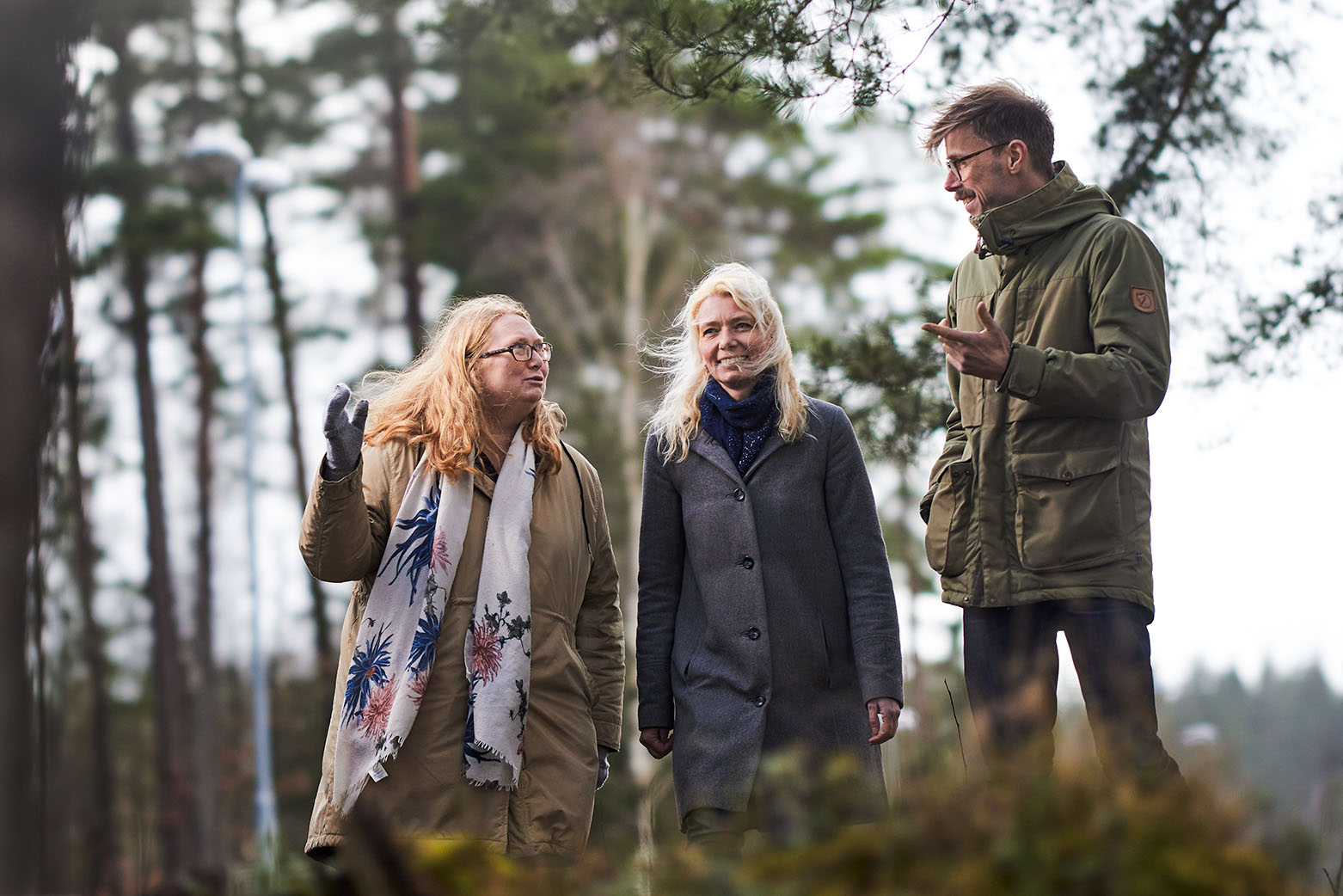
Annika Jägerbrand (University of Gävle), Maria Nilsson Tengelin (RISE) and Henrik Sandqvist (Fagerhult).
TEXT LINDA KARLSSON
PHOTO PATRIK SVEDBERG, DANIEL MAJAK

Our take on Bioinclusive Lighting
The right light, in the right place, at the right time. With Bioinclusive Lighting, we include the environmental aspects in planning outdoor lighting solutions and explore how we can minimise the impact on the ecosystem.
Read moreRelated News
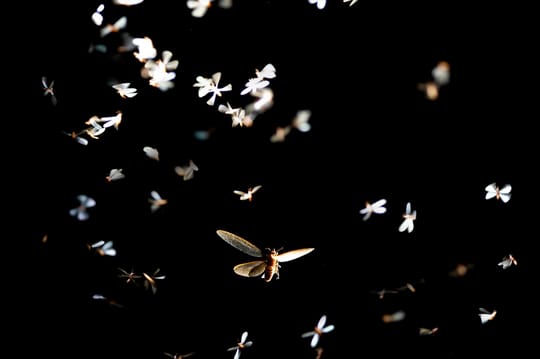
Less light, smarter control, and more eco-friendly
Outdoor lighting can affect animal species and humans in different ways, and the sum of the negative effects of artificial light is defined as light pollution. Annika Jägerbrand is Associate Professor and Senior Lecturer in Biology at the University of Gävle, and her work involves showing a clearer connection between outdoor lighting use and reduced ecological effects. The number of illuminated areas is increasing both in Europe and globally, and there are few places left today that are completely unaffected by electrical lighting and skyglow. In her research on sustainable urban development, Annika Jägerbrand, at the University of Gävle, north of Stockholm, is studying light pollution and its impact on species and ecosystems. She is an authority in the field both in Sweden and internationally, and her work involves standardisation that guides decision-makers regarding lighting in protected natural environments. History repeats itself At the beginning of the 20th century, the issue of increasingly illuminated cities was as topical as it is today. Annika shows a newspaper clip from the turn of the century when electric streetlights started to light up Stockholm. “Look here, they wanted it to be as ‘bright as the day’. Many of these subconscious ideas still permeate our thinking today, a hundred years later. Today we have 150,000 light sources in the city of Stockholm alone, and the number is increasing annually. As new areas and roads are built, the illuminated area usually increases, which means that more habitats and species can be adversely affected by light pollution.” A big part of the problem is that there are no common guidelines or restrictions regarding optimal and appropriate light for both humans and animals. “For example, we do not have standards that prevent light across the horizon for light sources other than road lighting, which is regulated to some extent. It’s strange, because on the one hand it is a huge waste of energy, and on the other hand it creates skyglow and a lot of light pollution. This is also evident in satellite images. There are general guidelines internationally, but they are infrequently used by decision-makers in Sweden.” Quote block - Annika Issues relating to the ecological consequences of light pollution began to be studied in earnest in the early 20th century. However, the first studies were not based on evidence, but more on observations. “Since no measurable studies were done, it is difficult to publish and compare the results. Today, there are extensive effects on large groups such as insects, birds, and bats, but this is still not sufficiently addressed in terms of lighting and to prevent adverse effects.” To make progress in this, clear thresholds and a greater understanding of how different species are affected by electric light in the dark are needed. “In the international discussions, the focus is usually on how light pollution affects astronomy rather than ecology. But the measures required are not exactly the same. Astronomers focus on upward light pollution and on using lower colour temperatures. In ecology, it is more important to have no light at all - especially in sensitive environments - and to combine various measures to reduce the overall impact. We are not there yet.” Control with third-party data Technologies exist today that support the reduced use of electrical light, and with control based on third-party data, ecologically sensitive periods can be avoided. Lighting can be adapted to hatching periods and when migratory birds are active or governed by temperature. For example, insects are not active all the time, and very little when the temperature is below ten degrees. “There is presently a lot of information that can be utilised if you want to avoid disturbing specific groups. All lighting is designed for humans, and we need to change our expectations that outdoor environments must always be fully lit at all hours of the day and night - we must learn to compromise. Many people are also disturbed by light spill in their bedrooms, so ensuring more considerate lighting design offers several benefits.” But lighting is a contentious issue. While residents typically want more lighting and brighter outdoor environments, such as around houses or along pedestrian and bicycle paths, ecologists want to conserve protected species and nature. “Ecologists think about how to preserve habitats in natural darkness. More research is therefore needed to find a good balance and more eco-friendly lighting for animals and nature,” concludes Annika Jägerbrand. This article is part one of three in our article series about "Bioinclusive Lighting" - Lighting solutions that meet people’s need for light, in balance with the ecosystem. In the next article, we meet researcher Maria Nilsson Tengelin from RISE, who talks about a field study that Fagerhult participated in.
New technology and intelligent control pave the way for tomorrow's outdoor lighting
All electric light is produced by - and for - humans. Research is now focusing on some important questions: Is our lighting of outdoor environments at the expense of other species? And how can we create a safe environment in balance with the ecosystem and with minimal light pollution? Outdoor lighting prolongs the day and is needed to provide a sense of safety and security, and to create attractive environments even when it is dark. However, light that is improperly directed, used at the wrong time of day, or lacks purpose can be considered light pollution. In addition, it is a waste of energy, and can negatively affect human well-being and animal habitats. “We are in the midst of a rapid development, where biodiversity is threatened,” says Henrik Sandqvist, Product and Application Manager Outdoor Lighting, at Fagerhult. “This happens largely because of humans, and lighting is a contributing factor. Some animals are attracted to the light and others avoid it, which can create an imbalance in the ecosystem.” HENRIK SANDQVIST, PRODUCT AND APPLICATION MANAGER OUTDOOR LIGHTING AT FAGERHULT Today, however, there are limited standards stipulating which lighting should be used where and when. Bioinclusive Lighting involves providing light that is good for people’s well-being and urban development – with as little impact on biodiversity as possible. “As a luminaire manufacturer, we are aware that we contribute to the increase in the amount of light. That is why we can also be part of the solution. We follow the research and guiding standards, and we listen to those who know more than we do. We want to stay ahead, and we always have Bioinclusive Lighting in mind in our product development. Our luminaire Evolume 1 has also been used in a joint study run by the University of Gävle and RISE, and we are happy to collaborate with others to find tomorrow’s solutions.” A darker light environment Around 80 percent of the world’s population cannot see a starry night sky. The reason is ‘skyglow’, which is caused by artificial light shining into the sky. The phenomenon is difficult to measure, but like other light pollution, it can have negative effects on humans, animals, and the environment. “Just as we turn off the lights when we leave a room, outdoor lighting should also be turned off or dimmed when people are no longer in the vicinity. Here it becomes very clear that the right light, in the right place, and at the right time plays an important role.” Henrik Sandqvist quote Since lighting can affect species’ habitats, the ecosystem needs greater consideration in lighting design. When replacing or installing new lighting, it is important to ask: What is the purpose of the lighting? How does it affect the environment, people, animals and nature? “Our basic idea is that all lighting must have a purpose, and the right character and strength. The amount of light must be commensurate, and it must only directed where it is needed. Since the nature of light is governed by its spectral distribution, we want to avoid light in the lower wavelengths. The general recommendation is therefore to use as warm a light as possible. ANNIKA JÄGERBRAND (UNIVERSITY OF GÄVLE), MARIA NILSSON TENGELIN (RISE) AND HENRIK SANDQVIST (FAGERHULT). Adaptive lighting can also adjust the light intensity and spectral distribution, and time control and presence control enable lighting precisely when needed. “This is nothing new, and nothing we will solve today. But a good place to start is to use a lighting designer with good knowledge of outdoor lighting and who considers the whole when devising a solution. We will continue to focus on finding an inclusive approach to create light for people that is in balance with the ecosystem,” concludes Henrik Sandqvist. Product in focus: Evolume The Evolume luminaire series has good light comfort, and is now available with more options and colour temperatures: 2700K, 2200K and PC Amber as well as adaptive light. This allows the intensity, wavelength distribution, and light distribution to be adapted based on need, time, and presence, and with more consideration for animals and nature.